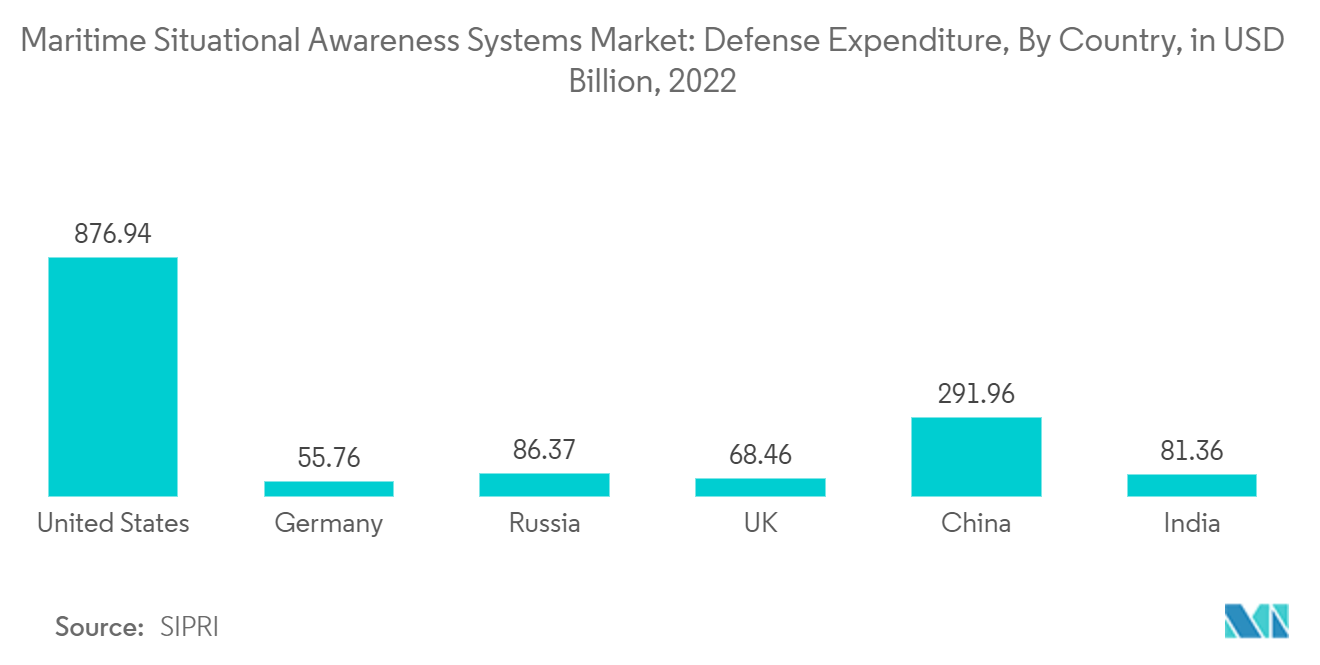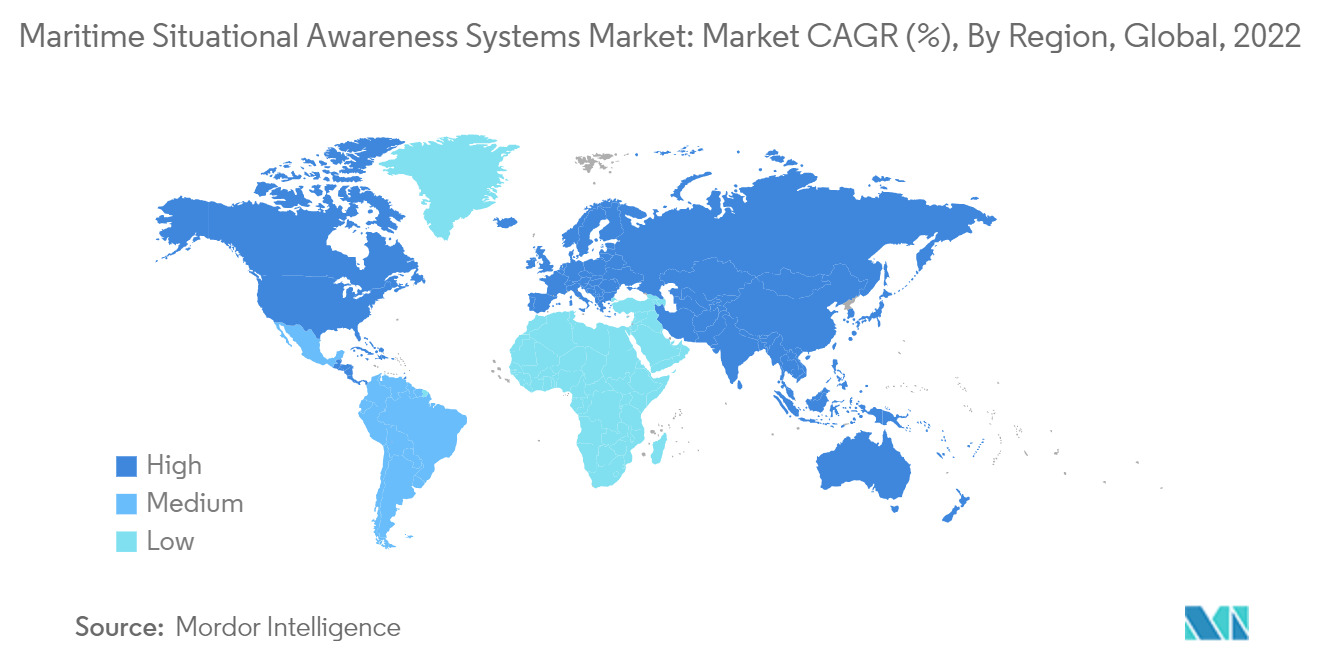Market Trends of Maritime Situational Awareness Systems Industry
Command and Control Segment to Exhibit the Highest Growth Rate During the Forecast Period
The increasing need for coordination between different fighting assets during combat is expected to drive the market for command-and-control systems. Naval forces across the world are investing heavily in the development of new vessels and equipping them with state-of-the-art battle management software and systems to increase their situational awareness.
Western naval powerhouses are increasingly focusing on frigate building and are investing in the development of frigate command and control systems. For instance, in January 2022, the US Naval Research Laboratory launched its PROTEUS pilot project to try the integrated system of maritime domain awareness capabilities. PROTEUS is used to identify, query, and filter maritime vessels based on user-defined criteria and provides near-real-time global maritime situational awareness. This is achieved by providing multi-source data ingestion and fusion services and automatically generating and maintaining global vessel tracks. In August 2023, the German Navy received the C2 maritime solution. The contract is a part of the GMN 2 (German Mission Network Block 2) project that aims to integrate and standardize C2 information systems and enhance the interoperability of domestic and international operations. The aforementioned factors and instances are propelling the development of maritime command and control systems across the world.

Asia-Pacific to Exhibit the Highest Growth Rate During the Forecast Period
Maritime situational awareness is an essential element for any country that wishes to govern its maritime zones. Asia-Pacific is home to countries such as China, India, Australia, Japan, South Korea, etc. These countries are significantly increasing their spending on the development and procurement of naval situational awareness systems to increase their battle preparedness over the sea. The market studied in the region is driven by technological innovations. For instance, in November 2023, Teledyne FLIR Defense launched its advanced maritime surveillance system, the SeaFLIR 240-EP, which provides surveillance for sea-based ISR, search and rescue, and SOF mission's advanced optics and image processing. It delivers services such as object detection, recognition, and identification.
China has sped up the integration process of its electro-optical sites, surface wave radars, and missile defense systems, a move that is expected to provide a significant boost to China's maritime situational awareness capabilities. China is rapidly retiring older, single-mission warships in favor of larger, multi-mission vessels equipped with advanced anti-ship, anti-air, and anti-submarine systems, sensors, and command-and-control networks. Similarly, the Indian Navy has been focusing on developing indigenous platforms, systems, sensors, and weapons as part of the modernization and expansion of its maritime forces. Such instances are propelling the growth of the maritime situational awareness systems market in the Asia-Pacific region.


